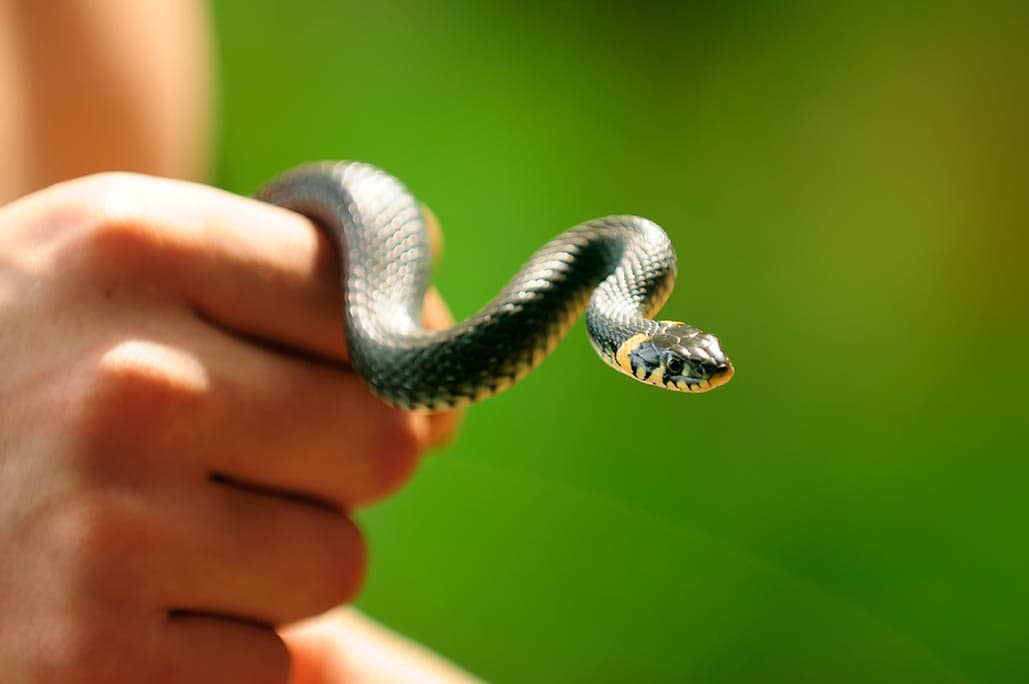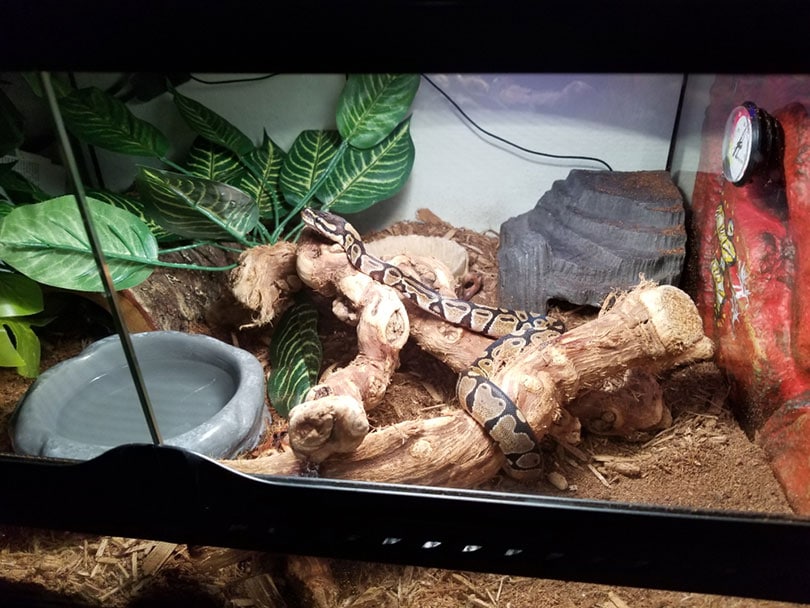
Click Below to Skip Ahead
The corn snake is a mouse hunter commonly found in cornfields, hence their name. These snakes are generally low-key and easy to care for. On average, corn snakes can grow to about 900 grams (2 lbs) and about 60 inches long. They are not vicious, and they are never a threat to humans, which makes them awesome pets for households of all types. Corn snakes come in a wide variety of different colors and patterns, making them favorites of snake collectors and enthusiasts. The southern United States is where these snakes originated from, but they can be found living in captivity all around the world today. Let’s take a look at how big corn snakes can get.
Facts About Corn Snakes
Corn snakes are also sometimes referred to as red rat snakes, as they are closely related to rat snakes, which are larger than them. Usually docile, the corn snake is easy for even children to handle. However, they shake their tails and make a rattling noise when they are feeling threatened. These snakes are known for being excellent escape artists and will spend much of their time trying to figure out how to get out of their habitat if they are feeling bored or boxed in.
Therefore, corn snakes need plenty of space to sprawl out and explore inside their habitats. The size of their habitat may have to change as time goes on, based on their growth. They love having dark places to hide during the day, as they are most active at dawn and dusk. A heat lamp should be utilized to keep the snake’s habitat warmed to about 85 degrees during the day and 75 degrees at night. Corn snakes tend to like it nice and humid too.

Corn Snake Size and Growth Chart
| Age | Weight | Length |
| Hatchling | 6–8 grams | 8–12 inches |
| 6 months | 25–30 grams | 20–30 inches |
| 12 months | 35–100 grams | 35–40 inches |
| 24 months | About 900 grams | About 60 inches |
When Do Corn Snakes Reach Their Full Size?
In general, they become fully grown corn snake between 2 and 3 years of age. They start at only between 8 and 12 inches in length and end up being between 4 and 5 feet in length once they reach maturity. They will gradually grow in between, with no dramatic growth spurts to note.
Months can go by without a noticeable difference in size due to their slow but steady growth. Many owners find it fun and interesting to measure and weigh their corn snakes once a month or so throughout their life to see exactly what kind of gains their snake is making as they grow from babies to adults.

What Other Factors Affect Corn Snake Growth?
There are a couple of factors that could affect the rate and quality of growth that a corn snake experiences as they age. Here is what you need to know.
Tank Size
The size of a corn snake’s tank can affect their growth as time goes on. A tank that is too large while they are babies can make them feel afraid and regress to hiding spaces, where they do not spend much time stretching and moving. A lack of movement and stretching can stunt a snake’s growth. A tank that is too small can also stunt their growth. Therefore, baby corn snakes should live in a 5-gallon tank. Once they become adults, they should live in a 20-gallon tank. A 10-gallon tank can be used for the middle stage.

Temperature
All snakes maintain their body temperature by obtaining heat from their environment. Improper temperatures that make it hard for a corn snake to maintain their body temperature may grow slowly because so much of their energy is being used to maintain their body temperature.
Also, if a snake is too cold, they will not eat because they need heat to digest their food. A lack of nutrition can negatively affect the growth rate of the snake if temperatures stay too low for too long. A heat lamp that helps keep the habitat stable temperature-wise will allow a corn snake to consistently maintain their body temperature.
Diet
Corn snakes predominantly eat mice. If they are fed other sources of food instead of mice as their main staple, chances are that they will not grow as expected throughout their life. Making sure that mice are the main staple of this snake’s diet will help ensure optimal growth and health.
Ideal Diet for Optimal Growth
In the wild, corn snakes eat mice. Therefore, this should be their main staple for optimal growth while living in captivity. Corn snakes should be fed about once a week. If a corn snake will not eat their offerings right away, the food should be taken away and offered again the next day until it does get eaten. Adults snakes can eat up to three mice in one sitting. Both live and dead mice can be offered at mealtime. Frozen mice should be completely defrosted before serving.
Dead mice can be held by the tails using tongs so the snake can “strike” their prey, like in the wild. In addition to mice, corn snakes can eat quail eggs as snacks. They can also occasionally eat rats and other small rodents in exchange for mice. But mice should always be their primary source of calories.
Are Corn Snakes Venomous When Fully Grown?
Corn snakes are not venomous, but they do pack a punch when it comes to biting. Their striking range is about half of their body length, which can be quite far. While their bite does hurt, the injury tends to heal itself within a few days without the need for medical assistance.
These snakes tend to bite when they feel threatened or cornered. They should be handled from a young age to reduce stress when being handled as adults. Regular handling will reduce the risk of bite injuries among friends and family who are just getting to know the snake.
Conclusion
Corn snakes are not the largest of the species, but they can still grow to an impressive 5 feet or so when fully grown. So, just because they are 12 inches or shorter when they are babies does not mean that they stay small and cute looking. However, you will not see their adult size as intimidating after bonding with your snake while they are still babies. Hopefully, our guide will help you care for your pet corn snake in a way that supports optimal growth. What are you most excited about experiencing as a corn snake owner? Let us know in the comments section.
Featured Image Credit: IrinaK, Shutterstock









